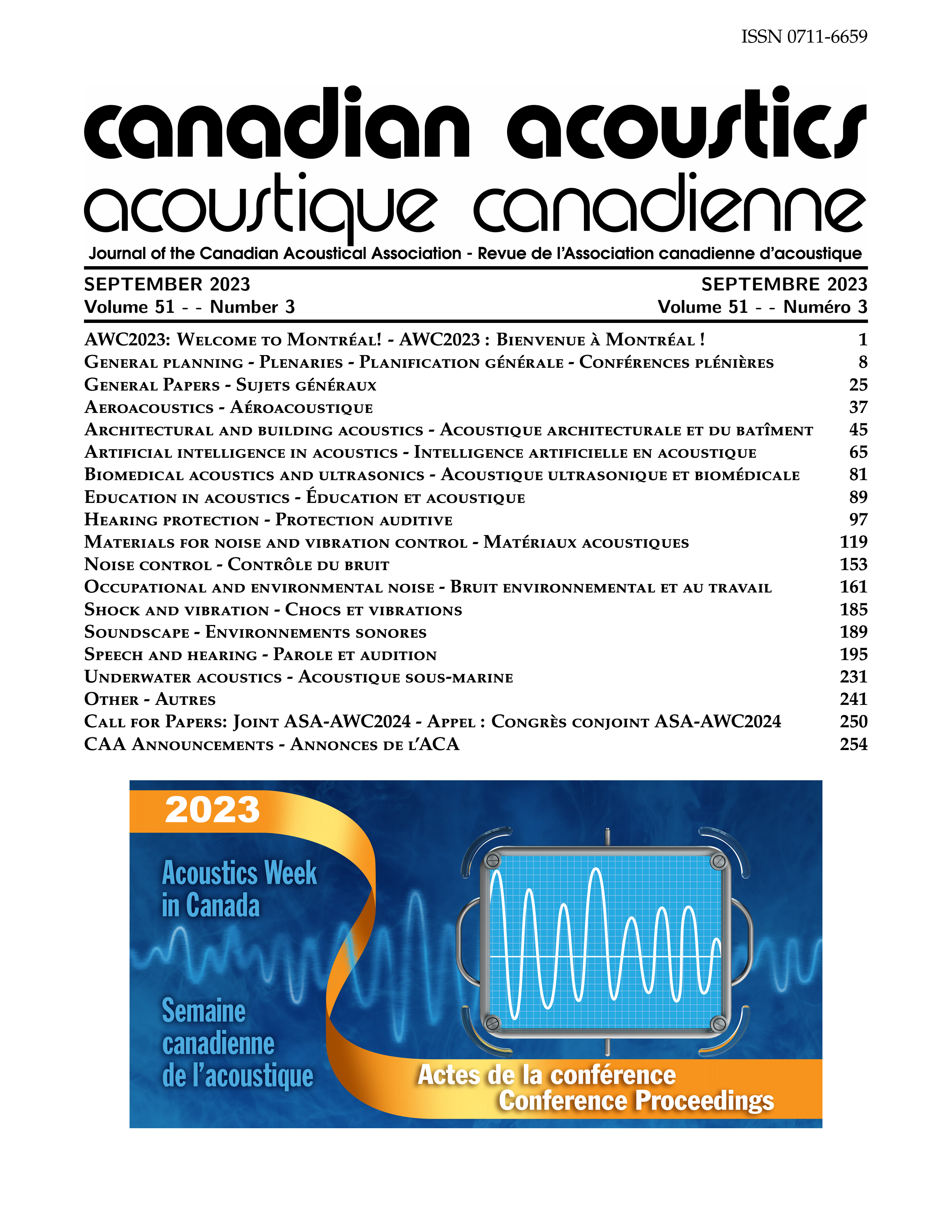A Criterion Based on the Calculation of a Solid Angle to Assess the Quality of Acoustic Images Obtained With a SMA
Abstract
The quality of an acoustic image is evaluated based on criteria such as the source level, the mainlobe-to-sidelobes ratio and the spatial resolution. Spatial resolution can be evaluated by the mainlobe area. For spherical microphone arrays, polar projection and ellipse area can be used. These methods are however applied in a plane and not in a spherical plane. In particular, the covariance ellipsemethod may exceed the spherical coordinate frame of the acoustic image when the mainlobe is large, typically at low frequencies, or when there are numerous sidelobes at high frequencies. In addition, the mainlobe may not be centered in the acoustic image and may be distorted around the poles. In order to overcome these limitations, a criterion based on the solid angle is introduced in this paper.The performance of the method based on the solid angle computation is compared with that based on the ellipse. Numerical simulations are performed using a spherical microphone array with a rigid t-design geometry, and spherical harmonics are used to generate the acoustic images. The results show that the solid angle method provides a more stable value compared to the covariance ellipse method when the source is not centered. When the source is centered, the results are similar except when sidelobes occur. In conclusion, the solid angle method provides a robust approach for evaluating the spatial resolution of acoustic images obtained with spherical microphone arrays.Additional Files
Published
How to Cite
Issue
Section
License
Author Licensing Addendum
This Licensing Addendum ("Addendum") is entered into between the undersigned Author(s) and Canadian Acoustics journal published by the Canadian Acoustical Association (hereinafter referred to as the "Publisher"). The Author(s) and the Publisher agree as follows:
-
Retained Rights: The Author(s) retain(s) the following rights:
- The right to reproduce, distribute, and publicly display the Work on the Author's personal website or the website of the Author's institution.
- The right to use the Work in the Author's teaching activities and presentations.
- The right to include the Work in a compilation for the Author's personal use, not for sale.
-
Grant of License: The Author(s) grant(s) to the Publisher a worldwide exclusive license to publish, reproduce, distribute, and display the Work in Canadian Acoustics and any other formats and media deemed appropriate by the Publisher.
-
Attribution: The Publisher agrees to include proper attribution to the Author(s) in all publications and reproductions of the Work.
-
No Conflict: This Addendum is intended to be in harmony with, and not in conflict with, the terms and conditions of the original agreement entered into between the Author(s) and the Publisher.
-
Copyright Clause: Copyright on articles is held by the Author(s). The corresponding Author has the right to grant on behalf of all Authors and does grant on behalf of all Authors, a worldwide exclusive license to the Publisher and its licensees in perpetuity, in all forms, formats, and media (whether known now or created in the future), including but not limited to the rights to publish, reproduce, distribute, display, store, translate, create adaptations, reprints, include within collections, and create summaries, extracts, and/or abstracts of the Contribution.


